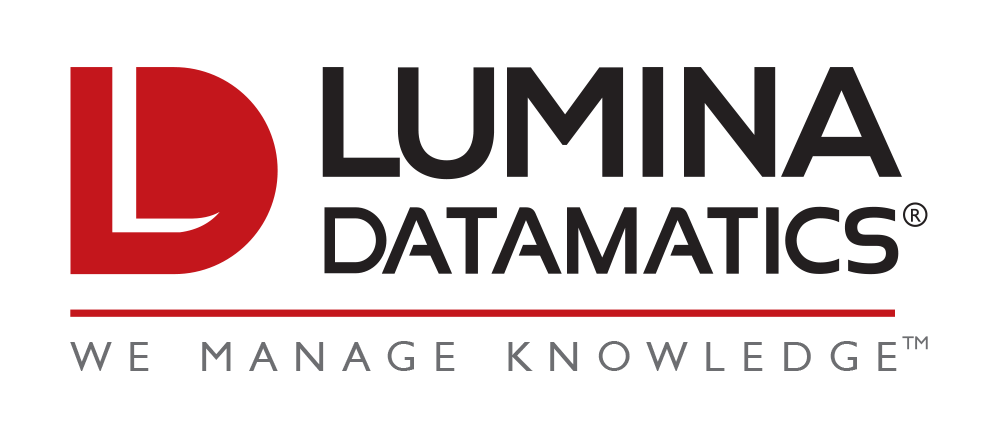If you are a seasoned copy editor and rejoice in the claim above, the text below may disappoint you. No, dear: that’s not a disclaimer. (By the way, all thanks to Stephen King for inspiring this title.)1
While such romanticism fuels the inspiration of budding copy editors, it rarely helps them blossom. You crash into the wall of pragmatism sooner than expected. However, the first part of the claim in the title is relevant as ever. You ask why? Well, that’s the source of livelihood for a copy editor. How? Umm…you should have guessed it by now. Okay: Imagine that humanity evolves to a God-like state of perfection—no mistakes ever in what we do. Many of us will be out of jobs—hello? Imperfection is the true identity of humanity; we only need to learn to love it. It is imperfection that brings life to life. Yikes! Sounds imperfect? Put another way: It is imperfection that enlivens everything around us. Phew!
Surprisingly, this very romanticism lays the breeding ground for the copy editor being used as a proverbial whipping boy. But is the copy editor really a whipping boy? With your copy editor’s hat on, does seeing this question make your heart feel desperate to leap out and shout in the affirmative? If so, you have come to the right place—for all wrong reasons. The tragedy of the copy editor being a whipping boy originates in the dense garden of romanticism that glorifies the art of copyediting and permits little light for the science of it to be visible.
Simply put, the text that follows aims to dispel some common myths around copyediting by objectively describing what the task includes and what it does not. I’ve made an attempt to KISS—I mean, Keep It Super Simple,2 avoiding all gobbledegook. So if you’re temporarily infected with love for the “divine act,” you really need ask yourself the following questions:
- What qualification, or traits, should I possess?
- What is the scope of work? Or how big is my arena?
- Who all care about the outcome of my work?
- What is the correct approach to copyediting?
Okay, time for me to push your head into the lake of holy descriptions. Never mind: it was kindly meant.
1. Qualification and Traits of a Copy Editor
This is the least of all worries. If you expel all gas around this aspect, the composition of a smart copy editor looks like this:
Excellent Command of English + Common Sense
But the world we live in is more complicated than this, so most organizations are expected to put forth a set minimum-qualification criterion and have their own ways to look at it. However, one certain expectation is the command of English. (By the way, the context of our discussion is limited to the English-language publishing sector.)
To get the sense of what it takes to be qualified for the task, I recommend that you fancy yourself for a moment as an editorial manager hiring fresh talent—it always helps to think like the other guy, you know. Ready? There you go. Well, measuring language proficiency is a straightforward task: all you need is to administer a well-designed test to the candidate, and Bob’s your uncle! However, the other variable in the formula is a hard nut to crack when it comes to evaluation. Well, there is no sure way to evaluate the level of common sense—at least in Homo sapiens—so we have nothing but to trust the academic qualifications as the benchmark. Wait a minute. Don’t buy my words so easily. There is a way to figure out something, if not all, about one’s level of common sense: the thought process.
The thought process is a heck of an aspect that must be explored out deeply during an interview session by using simple scenarios from day-to-day life, mostly involving personal experiences or opinions. People tend to freely extend their opinion on matters that concern the society and issues surrounding them. You can use these scenarios to scan the landscape of one’s thought process. The simpler the scenario, the better the chances of cues floating to the surface. If this sounds like fishing around, umm…you’re probably right. Well, time for you to swoosh out of the editorial manager’s skin!
Aside from the necessary qualifications and aptitude, most successful copy editors manifest some common (and interesting) traits:
- Introversion
- Perseverance
- An addiction to reading
- A thick skin (trust me)
- A degree of OCD—no kidding!
Geez, what compelled me to mention the fifth point!
Sound familiar? If so, you may be cut out for this “act of divinity.”
2. Measuring the Arena of Copyediting
It is paramount to know what comes within the purview of copyediting. Thankfully, the rules of the game are pretty cut and dried, with very little subjectivity involved—and that, too, is limited to the “packaging” part of the service and hardly has bearing on the core outcomes.
By the time content reaches the desk of a copy editor, it is almost in its final shape; that is, all subjective evaluation of the content is over. At this stage, all that a publisher or an author needs is a fresh pair of eyes to spot and remove any obvious anomalies in the content.
From the author’s perspective—on an emotional plane—she has seen her baby born, washed, cared for all through its infancy. She’s cared for her child as it became a toddler, and now it is time for the preschool interview: all she wants is an independent assurance that her adorable munchkin is prepared to face the world. She is not expecting the one who is providing this independent assurance to apply make-up, jewelry, nail polish, etc. to her child—thereby grooming the kid beyond recognition and her beyond consolation. You get my point?
More than knowing what the task involves, it is crucial to know what it does not. The scope of standard copyediting does NOT involve the following:
- Changing the original expression and writing style when the author’s version clearly conveys the meaning and is grammatical.
- Making alterations on the basis of your own predilection, rather than on the basis of documented evidence.
- Introducing cosmetic or unwarranted changes to well-written text for the sake of showing that you have read it. (Rookies tend to think in that fashion.)
- Making global style decisions without consulting the publisher or author.
Here is what the standard copyediting broadly involves:
- Ensuring the text is free of grammatical errors and typos.
- Applying the style per the publisher’s guidelines.
Believe you me, that’s all it is at the macro level, unless you wish to zoom in and grapple with a 50–60-point-long checklist and memorize hundreds of clauses from, say, The Chicago Manual of Style (the bible for copy editors). In addition, there are a few other layers that copy editors have to work at, if a particular project demands so.
So that sets the boundaries within which a copy editor has to survive, live, reign—whatever. At times there are a few elements that sit on the fringes, but those are specific to each project.
3. The Key Stakeholders
From the copyediting standpoint, there are two key stakeholders—other than the copy editor, of course. In a customer-centric approach, both the author and the publisher must be viewed as the key customers that the copy editor is to serve. As a copy editor, if you succeed in making both happy, you win. Well…easier said than done. Here is the key: KYC—Know Your Customer.
What does the author want from you?
Most authors are sensitive to their content, their baby—remember the analogy in the previous section? Keep their content intact and error free, and you will never run into choppy waters. Yes, that’s all it takes, unless you instead choose to scratch the itch to make changes per your preference—and then scratch your head for the rest of your (possibly short) copyediting career.
What does the publisher want from you?
No prizes for guessing it: 100 percent adherence to their guidelines (style, to be precise). A publisher will expect you to apply the publisher’s (i.e., house) style with the utmost accuracy and meet all stated requirements. These are simple and straightforward objectives that you must meet.
At times there may arise some contradiction in the style-related expectations of both your customers. You need to have fair understanding of their respective stakes in the matter to reach a solution that is palatable to both. Putting things in the correct perspective is key to handling such conflicts:
- The publisher is the final authority on style-related matters. However, the author’s preferences must be respected too.
- More often than not, the publisher allows the author’s preferred style as long as it is logical and coherent
- Where a style-related aspect in the author’s manuscript is in conflict with the house style and such style is logical, coherent, and followed consistently, it is the responsibility of the copy editor to seek confirmation from the publisher on whether or not the author’s preferred style can be retained as is.
Technical bytes on style
Language proficiency is what gets you into the role of a copy editor: some tweaking to the language rules we learned in school, a bit of unlearning, and there you are. However, it is the style-related matter that you need to master from scratch and where most effort is spent; that’s what sucks you dry—uh, exaggeration. Don’t get anxious. This section will give you the basic idea and a bird’s-eye view of style requirements. So what is style?
- Simply put, style signifies how something appears.
- In the publishing context, it means how text or other elements of a publication appear in print or online media.
- It renders identity to a publication.
- It follows a consistent pattern.
Broadly, all style requirements can be divided into two discrete categories: (1) subjective and (2) nonsubjective.3 Frankly, there is no such thing like categories of style, let alone the terms subjective style and nonsubjective style. You won’t find these terms in any standard copyediting guide. I’ve coined them to better segregate the style requirements into two buckets, primarily for training and automation purposes. Practically, this view of style helps aspiring copy editors get a handle on the subject.
Subjective style:
- requires careful decision-making.
- depends on the subject matter or context.
- is often not fully automatable.
- allows a degree of flexibility.
- Examples:
- Genus and species names
- Genes and gene products
- Computer terms
Nonsubjective style:
- requires significantly less decision-making.
- does not depend on the subject matter or context.
- is often fully automatable.
- largely comprises cut-and-dried rules.
- Examples:
- Chapter or subhead numbering style
- Figure and table caption heads
- Date format
Oh, a mea culpa: These technical bytes were optional; you could easily have skipped this section. Too late to mention it. Hope you found it worthwhile.
4. The Methodology
As a copy editor, you’re free to choose the approach that works best for you. However, the method you use must be time tested, logical, discrete, and transferable—scientific, for short. An ardent proponent of Taylorism, for me it is all about analyzing work and finding the “one best way” to do it (Frederick Winslow Taylor [1856–1915]).
If you happen to be in Britain, you may often hear people say something like, “If it is electronics, he really knows his onions.” A strange-sounding phrase with no link to real onions. However, I prefer to call my layered approach to copyediting “Know-Your-Onions Approach,” in a partly literal sense of the word “onion.”
The basic tenet of this approach is to do similar things together in a set sequence and thus verify the content layer by layer: starting at the outermost layer and progressing through the inside layers down to the core—covering structural, presentation, design, and other mechanical aspects before dealing with syntax, and then finally semantics.
That explains my preferred approach in a nut shell. But follow your own way—as long as it is based on scientific principles and brings positive results for you. There is no one-size-fits-all approach.
Concluding Remarks
In this digital age, publishing platforms are evolving at a mushrooming pace, tearing down the old-age sphere of standard formats, language use, and so forth. I know for sure that you, the present-day earthling, have turned much too tech savvy and live life matter-of-factly, with a lot of business sense—a close cousin of common sense. Neither an old fuddy-duddy can scare you with a brain-surgery (rocket-science, if you like) approach to the task nor you can be wooed by any degree of romanticism wrapped around the task. So it is time for the diehard members of We-the-Saviors Club to consign their romanticism to oblivion, for this is 2021, for God’s sake!
A careful whisper: In case there is any lingering doubt, this post is partly dedicated to those sweet souls who at some point in their copyediting career had to bear the wrath of the gods of the We-the-Saviors Club.
Interested in learning more about Lumina Datamatics’ copyediting services? Email our team to learn more about how to copyedit educational content or to request a quote. You can also visit our website to learn more about Lumina Datamatics.
Notes:
- In his book On Writing: A Memoir of the Craft, Stephen King said, “To write is human, to edit is divine.”
- I’ve borrowed it from the original—“Keep it Simple, Stupid,” as popularized by the US Navy—and given it a rather euphemistic tweak.
- I am consciously using the term “nonsubjective” rather than “objective” here, as the former term underlines the absence of subjectivity—something helpful for orientation purposes.





0 Comments